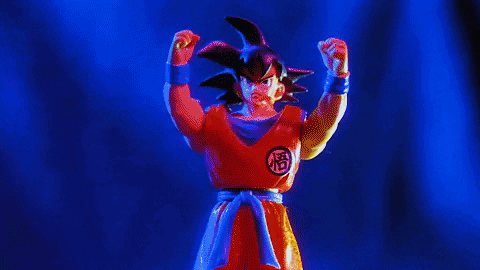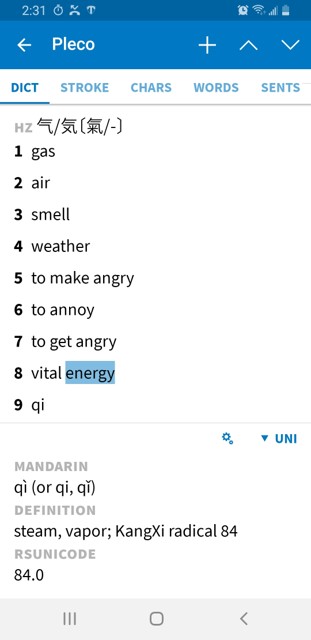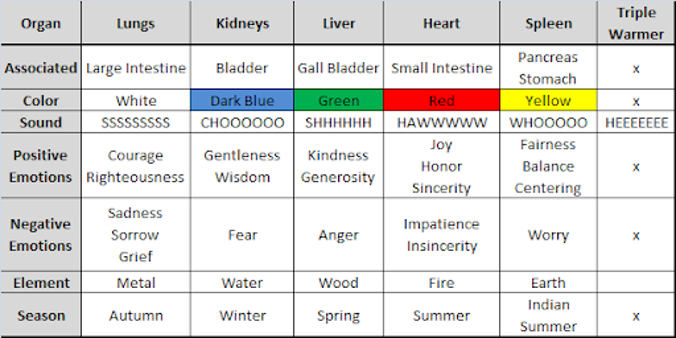I recently gave a talk as part of a virtual conference describing what is qi gong and how does it work. It was obvious that there is a huge and growing interest as people are finding out what qigong is good for and are experiencing the mental, physical, and performance benefits. It’s also helpful that activities like meditation are becoming more acceptable and more common.
However, it gets a bit fuzzy when people find out that qigong is a meditation, that it typically performed standing, and that you are also moving. This became crystal clear to me during the conference when I saw that attendees were still trying to simply understand what qigong is while speakers were diving into topics like the purpose of qigong, qigong exercises, and qigong breathing.
That’s not good! If you are like me, you need to see the full picture before you are able to digest the small parts or accept that the benefits of qigong are possible. This also gives us the buy-in to know that practicing qigong is worth our time. Here’s what to expect: I uploaded the entire talk I gave at that conference which you can watch here. This is intended to be an overview and I wrote a separate article on how qi gong works. At the end of this post I included the answers to a great Q&A that took place at the end of the workshop.
Defining what qigong is can be difficult for two reasons. It is actually many things because there are thousands of sets (series of movements) that are designed for very different goals (e.g., health, increased energy).
Secondly, there is a lot of misinformation out there or at least partial information. This isn’t due to people purposefully doing something wrong. Moreover, what is taught about qigong is just not accurate because people learned partial sets of movements or did not possess a high enough level of internal development to understand what was going on in each movement to pass it down to students.
So let’s use this space to clear this up a bit. I do qigong almost daily and credit it with my great health, clear thinking, and even good decision making. My level of stress despite having many demands on my life is just so low it’s not even work talking about. This is totally possible for you because adding qigong to your life is pretty easy. It all starts with an understanding of what qi gong is and how it works.
What is Qi Gong?
Qigong is a system of coordinated body-posture and movement, breathing, and meditation used for the purposes of health, spirituality, and martial-arts training. It is based on Chinese medicine, philosophy, and martial arts. There are several thousand types of qigong with the earlies recorded sets dating back 2000 years.
Typically, qigong is a sequence of 6-12 movements that are repeated several times. The movements are chosen based on the goal of the set. For example, qigong meditations can target reducing stress, increasing energy, or healing. Qigong is most often performed in a standing posture although there are also sitting versions, sets where people lay down, or take steps.
Officially Qigong is:
“A mind-body-spirit practice that improves one’s mental and physical health by integrating posture, movement, breathing technique, self-massage, sound, and focused intent.”
National Qi Gong Association
Unofficially qigong is:
- A series of movements
- Usually in a standing posture
- With coordinated and important breathing patterns
- Lasting about 5-15 minutes
- Organized to improve your body’s energy so you can feel better, heal, or have more energy

What is a Good Qi Gong Definition?
If you are new to the idea that there is robust energy inside of you that you can sense and feel, it can bend your brain a bit. An understanding of chi is essential for getting to a qigong definition that helps you progress in learning a set because it can take a while for this energy to develop and for you to feel it throughout the qi gong sets. When it begins to develop it is also very subtle so you need to know what to be looking for.
This doesn’t mean that it has to be complex or mystical though. I want you to take a little walk with me just in terms of vocabulary so we can get to an understanding of energy (“qi” or “chi”).
Inuit languages from the Northern hemisphere have over 50 words for snow.
- qanuk: ‘snowflake’
- kaneq: ‘frost’
- kanevvluk: ‘fine snow’
- qanikcaq: ‘snow on ground’
- muruaneq: ‘soft deep snow’
- nutaryuk: ‘fresh snow’
- pirta: ‘blizzard’
- qengaruk: ‘snow bank
This makes complete sense, right? Each word describes something different in all of their minor forms. On the other side of the globe, Arabic has over a hundred words related to camel that fall into groups of camel types like gender, size, drinking behavior, or function.
I only need two words, snow and camel. They have been serving me well for decades!
Likewise, within Chinese, there are several different words for energy. When we conceptualize all of these meanings with our one word: “energy,” it often takes on crazy ideas that we usually associate with superheroes.

It doesn’t have to be this unbelievable. Using the word more loosely, you could agree with me that when you wake up, your energy is different than at midday, and it’s different than when you go to bed. When you were sick, your energy is different. If you were to get furious, if you’re to drink five cups of coffee, if you were just to find out that your boyfriend or girlfriend broke up with, you would have different “energy.”

The second point is that all of these different energies exist within you. Whether it’s the fact that you’re sick or in the best shape of your life, it’s a description of something that you’ve produced.
The third aspect of energy that is within the body is that it is changeable and sometimes rapidly changeable. If you think about getting sick, one day you’re fine at work and the next day you are on your back in bed. Or how about the dramatic mental energy change when you narrowly escape a collision. You see in this case that your energy change has been caused by an outside source.
Fourthly, and this is where we start to leave our Western comfort zone, all qi gong is saying is that we can actively change these energies for the better, rather than letting our environment, age, or health dictate what happens to us. We take control a bit.
That’s as far as we need to go with chi for the purposes of understanding what qi gong is. We wrote a whole separate article on chi energy if you want to read more in that direction. Just accept that there are a variety of energies within you that can be changed. Qi gong sets are series of movements intended to manipulate this energy to get specific beneficial outcomes. Is this going to set your hair on fire? Is energy going to shoot out of your fingertips? Maybe if you have a great teacher (I’m joking!).
I think that qi gong is the most beneficial by what it doesn’t do. For example, you may not have as many maladies as someone else, your gender and age and race. You may never get sick. You may be the strongest, deepest thinker in your office. You may be highly flexible as a 65-year-old. That’s not something you’re going to publish on social media or brag about. But you will enjoy health and vitality at a level way higher than your peers.
Qigong Pronunciation and Spelling
The two most common spellings in English are “qigong” and “qi gong.” There are a variety of spellings in other languages. The most important thing is that you find the way to the information you are looking for and I have seen the following spelling used:
| chi kung | chi jong | chi home |
| chigong | qi-gong | qugong |
| qi qong | qijong | gi gong |
| qui gong | qiqong | gigong |
Despite these dozens of spellings, there is only one qigong pronunciation that is used. Nearly everyone in English says CHE as in CHEese and GONG like the instrument. Some say KEY-GONG referencing the semi-common pronunciation for energy -Qi. But the truth is that is a combination of one syllable pronounced like in Chinese and one in English. To hear the exact qigong pronunciation click on this Google Translation.
What is Qi Gong Good For?
This brings us to the debate about what the purpose of qi gong is. The answer lies in whatever your greatest desire or need is. There have been thousands of qi gong sets that have been developed over the centuries. Think of them like prescriptions for maladies. In this case though, rather than being given herbs, you are being given a series of movements.
To make the point, I want to share this really popular collaborative study where they reviewed as much research that they could find on qi gong and what kind of benefits doing qi gong produced. It concluded that there were basically nine areas the qi gong benefitted.
A Comprehensive Review of Health Benefits of Qi Qong and Tai Chi
In the last few years, the benefits of qi gong have been challenged and verified through scientific studies. The nine outcome category groupings that emerged were:
- bone density (n=4)
- cardiopulmonary effects (n=19)
- physical function (n=16)
- falls and related risk factors (n=23)
- Quality of Life (n=17)
- self-efficacy (n=8)
- patient reported outcomes (n=13)
- psychological symptoms (n=27)
- immune function (n=6).
Roger Jahnke, OMD, Linda Larkey, PhD, Carol Rogers, Jennifer Etnier, PhD, and Fang Lin – Am J Health Promot. 2010 JUL-AUG; 24(6): e1–e25.
Doing qi gong resulted in increases in bone density, positive cardiopulmonary effects, improvements in physical function or reduction in falls and related risk factors. This is akin to bone density, but not just the fact that your bones don’t break, but that you’re not even falling, alluding to better balance.
Subjects also reported improvements in quality of life. Self-efficacy patients reported outcomes being better. The largest body of research came from psychological symptoms. People are seeing improvements on mental goals or areas that they want to improve and improvement of perceived happiness and immunological function.
Some research like this has also done cross studies with tai chi vs qi gong vs yoga and also meditation. Without getting too far into the data, it’s pretty clear that consistent qi gong practice improves your health by many, many different markers. And this is not only the physical aspects of it that you would expect from physical movements, but there are also mental and wellbeing improvements.

What is Qi Gong Exercise and What Does it Look Like?
There are literally thousands of qi gong sets that can be incredibly different. Here are the basics and then I will share an example of the oldest recorded qi gong set, the six healing tones.
- Most qi gong sets are done standing but some are done sitting and laying down. Some use a combination of all three.
- They have 1-12 movements on average which include circling of the hands and gathering-like movements.
- Each movement is typically repeated several times. This is purposeful because the focus is on generating the energy and relaxing rather than memorizing intricate patterns.
- Movements typically move in a direction from floor to the top of the head or vice versa.
- Breathing is slowed and timed with the movements.
Here is a quick example you can scroll through to get the idea of what qi gong looks like:
Example of a Qi Gong Set – Six Healing Tones
One of the oldest qi gong sets dates back over 1500 years and is called Six Healing Tones. It is a sitting set with the last exercise done laying on the floor. The purpose behind this set is to increase and improve the energy of each organ so that it can properly do its job.
How it’s performed is that you concentrate on a specific organ, think of a specific color, and make a sound that is intended to make the tissue of that organ vibrate. Knowing that color is actually a vibration of the visual spectrum, hopefully you can also see how this is intended to increase the energy of the organ. As an example, you think about your lungs, make your mind white, and exhale with a SSSSSSSS sound. You do this for the five main organs and then end by lying on the floor and scanning the whole body while making a HEEEEEE sound.

Great Qi Gong Questions and Answers
Interest was really high at the end of the workshop and some people had some really good questions that they asked in the chat or emailed in later. I wanted to share those answers here:
How long does it take to learn qi gong?
It can take one to two months to learn qi gong in 15-20 minutes each day. The movements are general simple and can easily be memorized but it takes a while to get the coordination down and build internal energy up to a level that it can be felt (usually in the hands first). After you learn the movements, sets can take as little as 5-10 minutes to complete.
How often should I practice qi gong?
Qi gong should be practiced daily. For this reason, it is important to learn a set that makes it easy for you to keep up with the habit. Good qi gong sets are purposefully not complicated so that you can concentrate on your energy. That means that even some of the most powerful sets can be completed daily in just a few minutes. Do not do qi gong when you are sick however. Qi gong actively directs energy in your body. When you are sick, you want the body to be in charge and send that where it needs to go.
Can I do qi gong sitting?
Qi gong can be done sitting and standing sets can be modified to become a sitting routine if health issues, injuries, or low energy make standing difficult. Qi gong sets focus on staying erect with good posture so that energy can travel from the feet up through the top of the head. If you are sitting, stay erect but focusing on the point between your sits bones and pushing up through the top of the head. Also, a chair with arms is suggested so that you can hold on while rotating left and right.
Why learn qigong vs tai chi vs yoga…?
Learn Qi gong to reduce stress, improve your sleep, increase your mental focus, become more flexible, heal, and even undo old limiting beliefs that might be holding you back in life. It is complimentary to other practices like tai chi or yoga because it gives you a chance to focus on the internal development of energy to improve your other practices. In this essay I describe the similarities and differences between the three.
What is the best way to learn qi gong?
Here is a summary of tips to look for to evaluate your own qi gong form or choose a form or teacher. You can evaluate a qigong set that you are doing or want to learn by asking the following questions. Does the qigong set:
- Teach incrementally (adding movements over time)
- Include cleaning, building, and storing movements
- Have great resources like videos or images
- Have a small number of moves and low movement complexity
- Employ thumps to the body or bounces to benefit lymphatic tissue
- Take into consideration breath work and acupuncture/acupressure knowledge
What is the Best Qi Gong Set to Learn?
This is kind of a loaded question because there are literally thousands of qigong sets designed for different purposes such as healing, calming, or increasing development of internal strength.
The best qigong set to learn for most people that I have found was developed by Tristan Truscott from Satori Method and Peter Ragnar from Longevity Sage. I wrote more on it here: The Best Way to Learn Qi Gong at Home. If you are just getting started or want to learn a set that has great resources and is taught properly, check it out.
If you are fortunate enough to have a qi gong class taught near you, use these seven criteria to make sure the class is right for you and to help you decide whether to join them or study on your own.
Quickly Understand What Meditation is and Which to Choose
There are SO MANY ways to meditate! Whether you are brand new or expanding your practice, everyone benefits from learning about different available styles. There might be a style that better meets your needs or fits your personality. That’s why we wrote this essay on what meditation is and the 17 primary styles:
What is Meditation – The Primary Styles and Which to Choose
Then, we wrote articles on each of them!
| Body Scan Meditation | Chakra Meditation | Guided Meditation |
| Loving Kindness Meditation | Mantra Meditation | Sound Bath Meditation |
| Microcosmic Orbit Meditation | Qigong Meditation | Standing Meditation |
| Transcendental Meditation | Tapping Meditation | Zen Meditation |
| Vipassana Meditation | Insight Meditation | Walking Meditation |



Excellent to have some Qi gong sequences to enjoy.